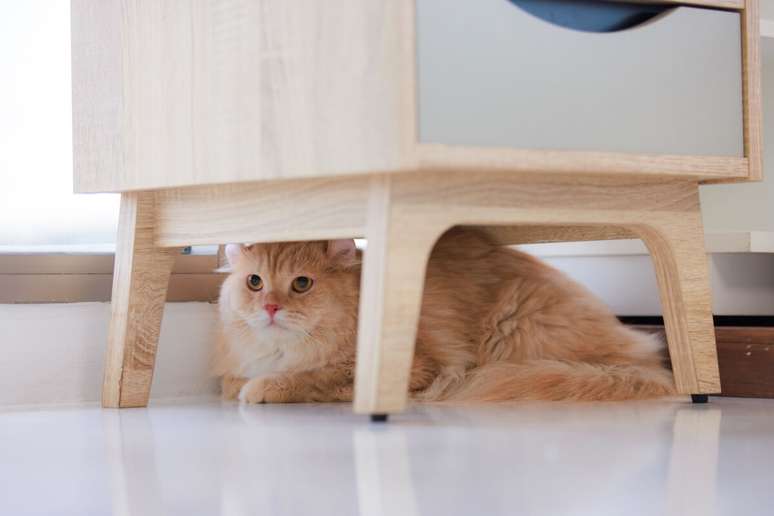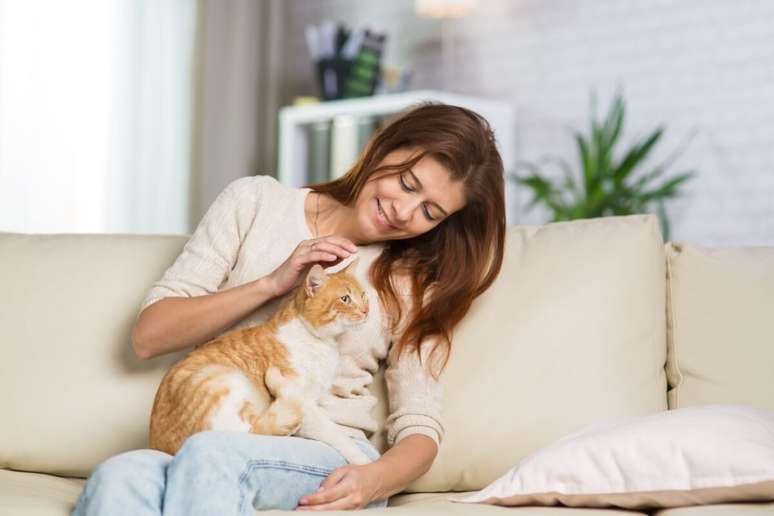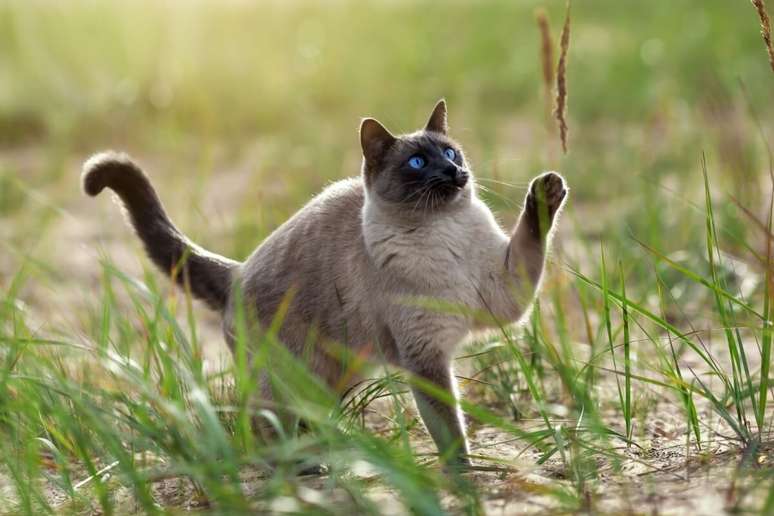Subtle behaviors and changes may reveal that the animal is experiencing distress and requires veterinary care.
Cats are discreet animals and often hide the fact that they are in pain, making it difficult for the owner to notice that something is wrong. This discomfort can have several causes, such as dental problems, arthritis, injuries or internal diseases. Therefore, it is important to be aware of changes in behavior and subtle signs that your feline may exhibit. This is because identifying them early helps seek veterinary care and ensure the animal’s well-being. See below!
1. Changes in appetite
If your cat stops eating or has a significant reduction in appetite, it could be a sign of pain. This behavior may indicate internal discomfort, dental problems, or general discomfort that makes the animals to avoid forage. Be careful if he stops eating for more than 24 hours and take him to the vet for checks.
2. Sudden aggression
Cats that were previously docile may become aggressive if they are in pain. The animal may growl, scratch or bite, especially if touched in a painful area. This aggression is a form of defense and can be a sign that something is wrong.
3. Lack of hygiene
Cats are naturally very clean, known for frequent grooming. When they experience pain, they can reduce or stop this behavior. This is because the the animal feels uncomfortable when they move or lick certain areas of the body. Therefore you may notice that the feline’s fur becomes dirty and unkempt, which is unusual for him.
4. Abnormal or hunched posture
When the cat is in pain, it may adopt various postures, such as curled up, with its spine arched, or lying rigidly. These signs indicate that he is trying to relieve discomfort, especially if he has abdominal or joint pain. Therefore, it is important to exercise caution if you avoid stretching or moving as usual.

5. Change in socializing habits
Suffering cats tend to isolate themselves, avoiding interaction with the owner and other animals. A normally sociable feline may hide in unusual places and spend long periods alone. This change indicates that the cat is not feeling well.
A cat in pain may prefer to remain isolated and avoid contact with people other animals. He may search for hidden places and not answer his guardian’s calls. Instinctively, when this species is sick or injured, it tends to hide to protect itself from any predators that might see it as easy prey. Additionally, the hideout offers a quiet place to rest and recover.
6. Several meows and vocalizations
The cat may vocalize more than usual when in pain, making long, high-pitched meows or even purring differently. Although purring is often a sign of contentment, in some cases it is used as a form of comfort during distress.
7. Reluctance to move
If your cat avoids jumping on furniture or seems to have difficulty climbing in places he usually frequents, it could be a sign of joint or muscle pain, leading him to prefer lying down or walking slowly. Cats with arthritis, for example, show less willingness to move and may avoid it active game.
8. Change in litter box usage habits
Cats in pain may avoid the litter box, both because of difficulty entering and positioning themselves inside it, and because they associate the act of urinating or defecating with discomfort. If he starts to relieve himself outside of his usual place, it could also be a sign that he is suffering from problems such as urinary infections or abdominal pain.
9. Excessive licking of a specific area
Just like dogs, cats can compulsively lick a sore part of their body. This behavior is a instinctive way trying to alleviate the discomfort. If he licks an area to the point of losing hair or breaking his skin, it’s important to investigate why.
Source: Terra
Ben Stock is a lifestyle journalist and author at Gossipify. He writes about topics such as health, wellness, travel, food and home decor. He provides practical advice and inspiration to improve well-being, keeps readers up to date with latest lifestyle news and trends, known for his engaging writing style, in-depth analysis and unique perspectives.








